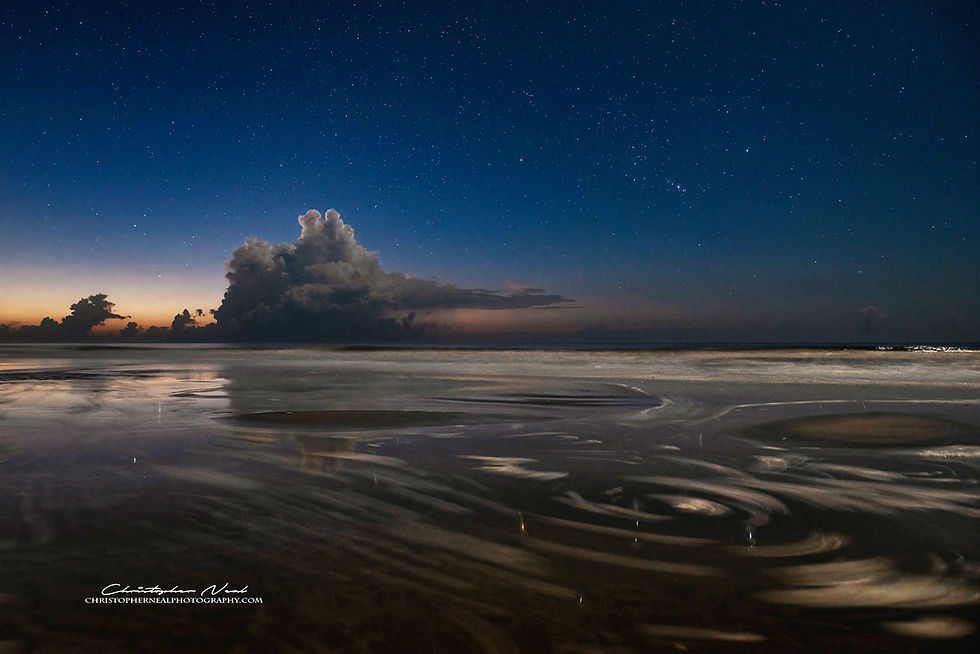
Image exposure on a modern camera has 3 controls, shutter speed, aperture and ISO. For this tip I'm going to discuss one that seems to unsettle most new nightscape photographers, shutter speed. Night sky photography requires long exposure but that is a relative term, it's longer than what is normally used but there is a limit to how long.
Shutter Speed
Shutter speed is the amount of time the shutter on a camera remains open allowing light to reach the sensor and this create an image. Conventional images use shutter speeds measured in fractions of a second, ie..1/250, 1/500, 1/1000 and so on. These very short speeds allow the camera to freeze the movement of the subjects being photographed. Photographing the darkness of the night sky requires shutter speed measured in seconds, 10s of seconds, sometimes minutes. This can often create a problem stopping motion and producing crisp, sharp images.
Rule of 500

The rotation of the earth creates the illusion of movement in the stars, since we generally desire nice crips stars in our photographs we need to stop that movement. However the need to use longer shutter speeds can make this difficult so we have a rule that creates the speed limit, the Rule of 500. Simple stated you divide 500 by the focal length of your lens to get the maximum number of seconds you shutter can be open with out tailing in the stars. I typically use a 14mm lens when I shoot nightscapes so by doing the math, 500/14 I get a shutter speed of 35 seconds. This usually becomes 30 when err on the side of caution and adopt a more conservative approach. By using this shutter speed I should be reasonably confident it achieving sharp, pinpoint stars.
The Fine Print
There are a few nuances to the Rule of 500 that you need to be aware of. First, it's based on the use of a full frame camera. If you are using a crop sensor or a Micro 4/3 you will need to multiply you lens length by the crop factor. A 14mm becomes a 21mm on a crop sensor and a 28mm on a M4/3. This will have the effect of dropping you shutter speed a bit. Second is the megapixel size of your sensor. Larger, newer sensors allow for greater detail in an image so you may want to shave a few more second off to account for that.
A Starting Point
There are several different factors that go into the final exposure settings for any image or series of images but by using the Rule of 500 you can find you starting point for your shutter speed. The more time you spend capturing images and then processing them the better feel you will get for what settings your particular camera and style of shooting requires.
Youtube
I have a companion Youtube video for this post that I did a year or so ago.
If you are interested in any of my images please visit my Shop and make sure you Subscribe to my newsletter for monthly tips, updates and special discounts.
Tutorials

Please check out my YouTube Channel for more tips, tutorials and walkthroughs.

Comments